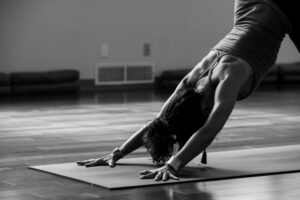
Rehabilitation is a journey toward recovery and improved physical well-being, often following injuries, surgeries, or health conditions. Pilates, a versatile and low-impact exercise system, has gained recognition in the realm of rehabilitation for its ability to aid recovery, enhance mobility, and rebuild strength. In this comprehensive guide, we will explore the benefits of Pilates for rehabilitation, its widespread use in clinical settings, the suitability of Reformer Pilates, and its distinction from physical therapy.
Is Pilates good for rehabilitation?
Pilates is indeed a valuable tool for rehabilitation, and here’s why:
1. Low-Impact Nature: Pilates is gentle on the joints and muscles, making it an ideal choice for individuals recovering from injuries or surgeries. It offers a way to regain strength and mobility without subjecting the body to high-impact stress.
2. Core Strengthening: Pilates places a strong emphasis on core strength, which is essential for stability and proper body mechanics. Strengthening the core can help individuals regain balance and support injured areas.
3. Flexibility and Range of Motion: Pilates incorporates stretching and flexibility exercises that enhance range of motion. This is particularly beneficial for those recovering from joint injuries or surgeries.
4. Body Awareness: Pilates encourages a deep mind-body connection, promoting body awareness and mindfulness. This can help individuals better understand their bodies and make conscious movements that aid in rehabilitation.
5. Customizable Workouts: Pilates exercises can be modified and adapted to accommodate various fitness levels and physical limitations. This flexibility allows for tailored workouts that address specific rehabilitation needs.
6. Improved Posture: Pilates focuses on posture and alignment, which can be especially important for individuals recovering from injuries or surgeries that may have affected their posture.
7. Gradual Progression: Pilates allows for gradual progression, starting with foundational exercises and gradually advancing to more challenging movements as strength and mobility improve.
Why Pilates is used in so many rehabilitation clinics?
Pilates has become a staple in rehabilitation clinics for several compelling reasons:
1. Versatility: Pilates can be customized to address a wide range of rehabilitation needs, making it applicable to various injuries and conditions.
2. Low-Impact*: Rehabilitation often involves the need for low-impact exercises to protect healing tissues. Pilates fits this requirement perfectly.
3. Holistic Approach: Pilates takes a holistic approach to health and wellness, focusing on both physical and mental aspects of recovery.
4. Suitable for All Ages*: Pilates is suitable for individuals of all ages and fitness levels, making it inclusive and accessible in clinical settings.
5. Individualized Care: Pilates can be tailored to each patient’s unique needs, allowing for personalized rehabilitation programs.
6. Integration with Other Therapies: Pilates can complement other rehabilitation modalities such as physical therapy, occupational therapy, and chiropractic care.
7. Patient Engagement: The engaging and enjoyable nature of Pilates motivates patients to actively participate in their rehabilitation process.
Is Reformer Pilates good for rehabilitation?
Reformer Pilates can be highly beneficial for rehabilitation, but it depends on the individual’s condition and goals:
1. Adjustable Resistance: The reformer machine offers adjustable resistance, allowing for gradual progression as strength improves. This is valuable for individuals recovering from injuries or surgeries.
2. Support and Assistance: The reformer provides support and assistance during exercises, which can be advantageous for those with limited mobility or stability issues.
3. Range of Exercises: The reformer offers a wide range of exercises that can target specific muscle groups and address various rehabilitation needs.
4. Increased Challenge: Advanced practitioners can find Reformer Pilates challenging, making it suitable for individuals looking to rebuild strength and flexibility after injuries.
However, it’s essential for individuals to work with qualified instructors or physical therapists who can create customized Reformer Pilates programs tailored to their rehabilitation goals and conditions.
Does Pilates count as physical therapy?
Pilates is not a substitute for physical therapy, but it can complement and enhance the effects of physical therapy in many cases:
1. Different Approaches: Physical therapy is a specialized medical field focused on diagnosing and treating injuries and conditions. Pilates, on the other hand, is an exercise system designed to improve strength, flexibility, and body awareness.
2. Complementary Benefits: Pilates can complement physical therapy by providing exercises that help with strength, mobility, and overall well-being. It can be an effective part of a comprehensive rehabilitation program.
3. Collaboration*: In some cases, physical therapists may work collaboratively with Pilates instructors to create integrated rehabilitation plans that include both therapeutic interventions and Pilates exercises.
4. Supervision*: It’s essential to work with qualified instructors and physical therapists who can provide guidance and ensure that Pilates exercises align with your specific rehabilitation needs.
In summary, Pilates is a valuable tool for rehabilitation due to its low-impact nature, core-strengthening benefits, and flexibility in customization. It is widely used in rehabilitation clinics for its versatility and effectiveness in addressing a range of conditions. Reformer Pilates can be especially beneficial when tailored to individual rehabilitation goals. However, it’s essential to remember that Pilates is not a replacement for physical therapy but can be a valuable complement to it. When integrated into a comprehensive rehabilitation program, Pilates can aid in the journey toward recovery and improved physical well-being.